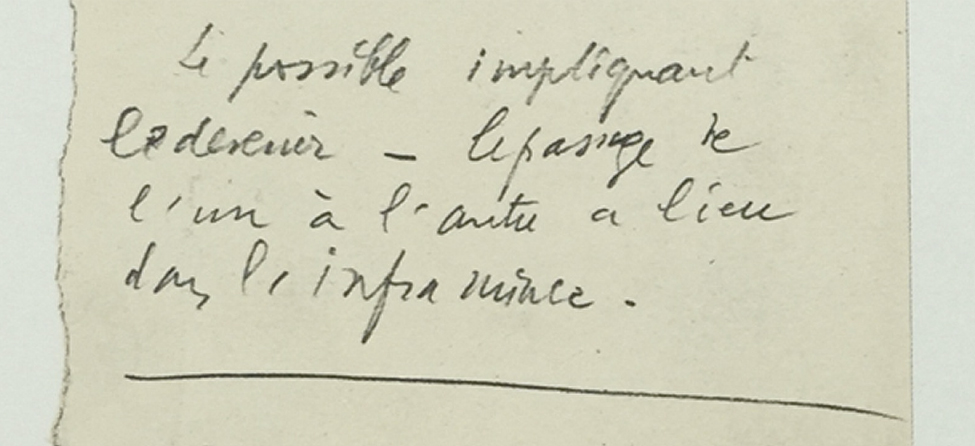Infrathin
“What art is in reality is this missing link, not the links which exist. It’s not what you see that is art, art is the gap. I like this idea and even if it’s not true I accept it for the truth.”[1]http://www.impossibleobjectsmarfa.com/infrathin (Arturo Schwarz, The Complete Works of Marcel Duchamp (New York, NY: Delano Greenidge Editions, 1997), 1: 258.)
Marcel Duchamp’s idea of infrathin (French: inframince)- which Duchamp said couldn’t be defined “one can only give examples of it (Thierry de Duve, Pictorial Nominalism: On Marcel Duchamp’s Passage from Painting to Readymade, trans. Dana Polan (Minneapolis: University of Minnesota, 1991), 160.)”- provides us with a framework within which we can examine the infinite space between the real and the digital worlds.
fire without smoke, the warmth of a seat which has just been left, reflection from a mirror or glass, watered silk , iridescents, the people who go through (subway gates) at the very last moment, velvet trousers their whistling sound is an infra-thin separation signaled. Marcel Duchamp : notes; Matisse, Paul.
The infrathin, as explained by Duchamp, requires two physical objects between which it is created. Its creation is caused by the interaction through time between these objects: a person standing up from a chair, water on silk, velvet trousers brushing against each other. Even a reflection in a mirror or a glass is physical in that there are photons of light bouncing back into ones eyes from the reflective surface. With each movement of the velvet covered limb brushing past the other a new infrathin is created. There is no portal that is opened to the infrathin. The infinite space of the infrathin is created, exists and dies in an instant. It lives so briefly that its form cannot be discerned. ‘This is why the infrathin can only ever be exemplary.’
“The infrathin gestures toward this share of the event, looking for a way to make felt how that which never takes concrete form nonetheless makes a difference. This is why the infrathin can only ever be exemplary. To define it would be to give it the form that eludes it.” (For a Pragmatics of the Useless)
“The infrathin makes felt how both worlds might briefly coexist.” (For a Pragmatics of the Useless)
“the passage from one to the other takes place in the infrathin” (Schwartz)
The so-called “Stargate” sequence in Stanley Kubrick’s 2001: A Space Odyssey is one of the most successful and well-known visualisations of travelling between two worlds and two conceptual states. The film’s theme is about how humans evolved physically by first taking conceptual leaps prompted by the presence of a ‘monolith’ which had been purposely planted for photo-humans and humans to find.
The journey through the “Stargate” is a 10 minute sequence towards the end of the film and shows the character Dr. David Bowman undergoing sometimes violent and terrifying transport from our solar system into another, alien, space. Bowman ends up in a kind of hotel created by alien beings. Here he lives out the rest of his life before he is transformed, evolved, into a new type of being, a “Starchild”.
The journey he takes could be interpreted not as a physical journey, but as a conceptual journey via the infrathin. If seen from the outside, that journey could have taken a nanosecond, yet we are shown the experience of what it is to see the unseeable, to make real the undefinable. We don’t know how time progresses at his destination or if it progresses or if we are simply viewing an interpretation of a somatic hyper-evolutionary leap. It could be a representation of the journey between Now and a Conceptual Next.
References
| ↑1 | http://www.impossibleobjectsmarfa.com/infrathin |
|---|
